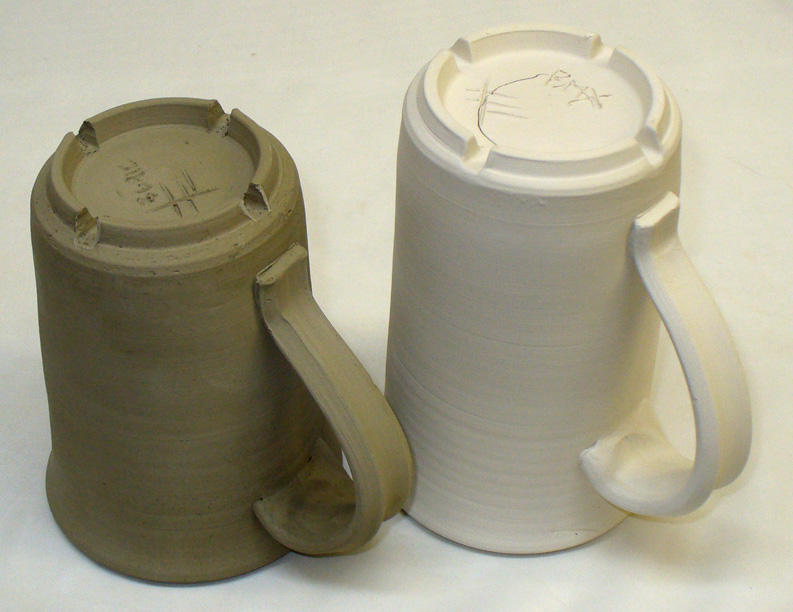It dry shrinks much more yet cracks less. How is that possible?
Two mugs have dried. The local terra cotta native clay on the left shrinks 7.5% on drying, the porcelain one on the right only 6% (it is made using Kentucky insight-live.com/material/80">ball clay). Yet few pieces of the terra cotta are ever lost due to drying cracks, even if it is uneven! For example, in a batch of a dozen mugs none of these will be lost whereas one or two of the white ones will always crack. Why? Dry strength. The clay on the left is very strong in the dry state, likely double or triple the white clay (the strength is a by product of its high plasticity and particle size distribution profile). That strength is enough to more than counter the extra shrinkage.
Pages that reference this post in the Digitalfire Reference Library:
One reason why stoneware clays are more convenient, How a kaolin and ball clay compare in a dry performance test, Drying Performance, Drying Crack, Green Strength, Cracking of Clays During Drying

This post is one of thousands found in the Digitalfire Reference Database. Most are part of a timeline maintained by Tony Hansen. You can search that timeline on the home page of digitalfire.com.
